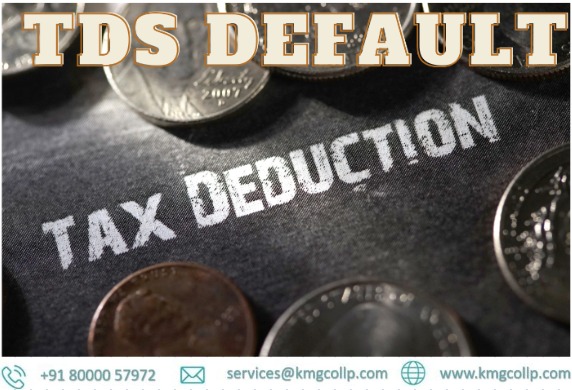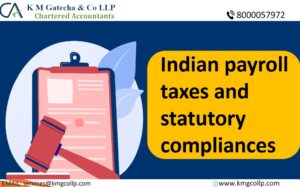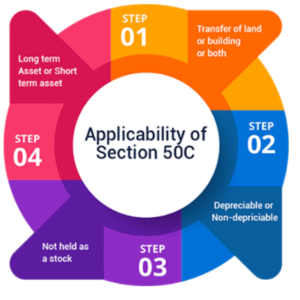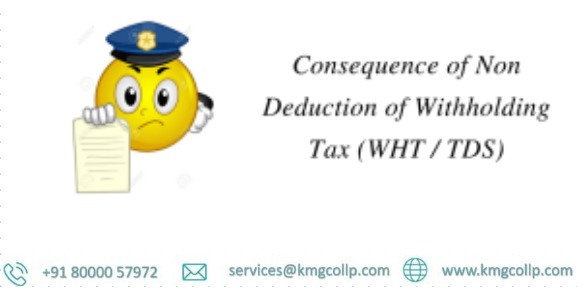
Hello Folks!!
In this blog, we are going to discuss about the Short Payment & Short Deduction TDS defaults-Problems & Solutions.
These days TDS has become a nightmare both for the assessee as well as the tax professional with notices being issued by the CPC (TDS) immediately on filing of the Quarterly TDS Statements.
In an effort to provide a comprehensive list of issues and solutions related to short TDS payment and short TDS deduction defaults notified in U/S 200A, the following is provided:
A) Short TDS Deduction Defaults (Short Payment & Short Deduction)
Short Deduction defaults arise due to many reasons, some of which are as follows:
Due to PAN Errors:
Using the wrong PAN is a major contributor to short deduction defaults:
In the TDS Return, it is very important to quote the correct PAN. The incorrect PAN results in a TDS demand of 20% less than what has already been deducted. Additionally, the deductee whose TDS has been deducted will not receive any TDS Credit.
It additionally brings about defaults in outfitting TDS Testaments as nowadays the TDS Endorsements are being given from the Follows site, accordingly in the event that the Dish is erroneous, it brings about more than one default with respect to the deductor and superfluous difficulty for the deductee who doesn’t get the credit of his duties paid.
One more issue with citing of some unacceptable Container is that CPC (TDS) while handling the revision proclamation doesn’t right the blunders in Skillet where the misstep in citing of Dish is multiple letters in order and two numeric characters even in instances of certified typographical mistakes. There are two approaches for rectifying the Dish Blunders of multiple letters in order and 2 numeric characters:
To document the rectification proclamation by making the section with some unacceptable Skillet at a sum equivalent to zero as the deductee passage can’t be erased and afterward add a new deductee column for the sum paid and TDS deducted with the right Container.
To advance against the implication U/s 200A with the CIT (TDS)
Requirements from the client:
- Copy of PAN card of the deductee.
- Deduct TDS@20% in absence of PAN of the deductee.
Points to remember:-
The online correction facility at www.tdscpc.gov.in can be used to make a correction statement for any error in the PAN. To use this correction facility, enter the correct information about the deductor’s profile on the TRACES website.
Online Correction can be used with or without the authorized person’s digital signature.
Due to wrong quotation of Lower Deduction Certificate U/s 197 of the Income Tax Act’1961:
The incorrect quotation of the details on the certificate of lower tax deduction is another cause of the short deduction default.
When completing the TDS Return, the following should be correctly quoted.
Certificate Number Duration of validity of the certificate Amount subject to lower deduction Rate at which tax is to be deducted as stated in the certificate
Number of Certificate:
Declaration Number is a ten digit alpha numeric number referenced close by the TAN and the name of the deductee.
Please keep in mind that the Reference The certificate number listed at the top is not the certificate number that should be used when filing the TDS Return, which is a common error made by assessees.
Period:
Each lower derivation testament is legitimate for the predetermined period referenced in the authentication. Care ought to be taken to deduct TDS at the lower rate just for the exchanges entered between the period referenced in the Authentication.
Exchanges entered when the predetermined period need to endure charge allowance at the ordinary rates as recommended under the Demonstration.
Amount:
Each lower derivation authentication is legitimate for the sum referenced in the declaration.
This means that tax will be deducted from the recipient’s payment if the total amount of the transactions exceeds the certificate’s limit at the normal rates outlined in the Act.
Rate:
The rate specified in the certificate should be used to deduct TDS.
Due to mistake in deduction of Tax at Source:
The assessee sometimes deducts TDS for an amount that is lower than the Act’s rates because of ignorance or another reason.
When submitting the return, care should be taken to ensure that the amount of tax deducted from each payment does not fall below the amount that should have been deducted if tax were to be deducted at the prescribed rate.
If this is the case, a new challan should be used to immediately deposit the remaining tax.
Due to wrong quotation of 15G and 15H Certificates:
Many people are unaware that receiving Forms 15G and 15H does not automatically result in a tax deduction; this is especially true when banks file their TDS returns.
Erroneous detailing of structures 15G/H specifics can result I short allowance defaults.
1. Short TDS Payment Defaults
Short payment defaults arise due to the following reasons:
2. Due to Challan errors:
Short installment mistakes additionally emerge because of wrong citing of the specifics of the challan through which duty has been paid.
The TDS Return must accurately include the following challan information:
Number of the challan and the BSR code of the bank where the tax is deposited.
Tender date for the challan’s deposit In addition, the return must include information about the tax payment method and the payment bank. Consult the best CA in India.
Let’s examine each of these particulars one at a time.
1) Challan Number:
At the time of clearing the challan, the receiving banker includes a five-digit number known as the challan number.
If the challan number is unclear on the challan, the bank should verify it once more.
The following link can also be used to confirm the challan number:
There are two choices available after logging in to tin.tin.nsdl.com/oltas/index.html:
Challan-based view TAN-based view
a) In the Challan-based view, the following information can be entered to verify the details of each challan:
- BSR Code
- Challan delicate date
- Challan Chronic Number i.e challan number
- Challan Sum
Note that these can be checked provided that you have a harsh thought of the above specifics and same are to be affirmed.
1. b) View based on TAN: In the TAN Based view the specifics of the challan for a specific period can be checked by simply entering the TAN of the deductor and the period for which the challans are to be checked.
Note: 24 months are the maximum length of time that can be entered here.
After you enter the ideal time frame and the TAN, the rundown of all the challans paid during the chose time span will be apparent. In order to match the details of the challan, you will need to enter the amount.
2) Tender date for the Challan: The date on which the challan is presented to the bank for payment is called the challan tender date. At the time of clearing, this date is recorded in the bank’s stamp on the challan. This can likewise be checked from the previously mentioned connect.
3) BSR Number: BSR Code is a seven digit code for each part of the bank i.e each branch has a different BSR Code. You could check the BSR Code from the web or by calling the concerned part of the bank.
4) The sum of the check: The amount entered on the challan ought to include not only the amount paid for the tax, but also any other payments made in accordance with Section 234E, such as penalties or fees
Currently, a challan file is downloaded when the TDS Return is created. This file shows whether the information on the challan was entered correctly in the Return.
In the event of off base specifics being placed in the return, it shows/produces an admonition record that the ‘Challan subtleties are absent in the challan document downloaded.’
One more highlight recall is that all the time the TDS Return is to be recorded or is documented on the day or a day after which the challan is kept in the bank for clearing.
Since the challan has not yet been cleared from the bank, it will not be included in the challan file that is downloaded at the time of generation, resulting in the above-mentioned warning file.
If there is still time to file the return, the person in question should wait until the challan has cleared the bank and is visible in the downloaded challan file before doing so. This is because the return is processed at CPC (TDS) when it is filed, and if the details of the challan are present in the challan file when the return is processed, CPC will demand a short payment of tax, which is not the case.
Point to remember:-
Correction statement for rectifying any error in the Challan can be done by utilising the online correction facility at www.tdscpc.gov.in , this correction facility can be used by entering the correct details of the profile of the deductor with the TRACES website.
Online Correction can be used with or without digital signature of the authorized person.
In some cases, the deductor makes a mistake and pays more than what is required to be paid as TDS. This excess must be deducted from any subsequent tax payments.
For this situation extraordinary consideration is to be taken while distributing the installments of TDS with the unconsumed measures of the challan.
Other important points related to challans:
From the monetary year 2013-14 onwards, the segment code under which the challan is paid and that entered in the return doesn’t make any difference. The short payment will not default if the correct section code is entered so long as the tax has been paid.
The challan’s entry for the fiscal year is also irrelevant. This will not result in a short payment default.
A mistake in quoting the deductor’s TAN in the challan can only be fixed by the assessee’s jurisdictional A.O., not by the CPC (TDS).
Very soon the CPC TDS is going to bring a notification where it will be mandatory to close all the short payment defaults before the necessary consolidated file can be downloaded for revision of other defaults.
Following are key information to be noted in this regard:
If unconsumed challans are available in the CPC (TDS) system, they must be corrected online (without a digital signature) to close the preceding default.
If the challan for consumption is not available, the deductor must first deposit the tax in the bank. After three to four days, the same challan will be available for tagging in the CPC (TDS) system.
CPC (TDS) commands to close the above default by Coordinating or Installment of challans. Until the preceding default is removed, the user will not be able to download the Conso file for the relevant TDS statement.
The Web-based Remedy office of Follows should be utilized for conclusion of the Short Installment default.
After the default is closed, the user will not be able to download the Conso file for the relevant time period.
FAQs on Short Payment & Short Deduction
1. What causes short deduction defaults in TDs?
Due to PAN Errors: One of the prime reasons for short deduction defaults is quoting the wrong PAN: Quoting of the correct PAN is very essential in the TDS Return. Quoting the wrong PAN give rise to TDS demand of 20% less the amount of TDS already deducted. It also results in no TDS Credit being given to the deductee whose TDS has been deducted. Short Payment & Short Deduction.
2. What causes short payment defaults?
Short Deduction defaultsmay hoist because of various reasons, some of them are as follows: Pan Errors Wrong quotation of Lower Deduction Certificate Mistake in TDS Incorrect reporting of 15G and 15H Certificates Short payment defaults may occur due to the Challan errors which mean wrong quoting of the below-mentioned particulars of the challan. Short Payment & Short Deduction.
3. Why is quoting wrong Pan important in TDs return?
This is one of the primary reasons for short deduction defaults Furnishing the correct details about PAN is very important in the TDS Return. The consequences of Quoting the wrong PAN are as follows: It brings out the TDS demand of 20% less the amount of TDS already deducted. No TDS Credit is given to the deductee whose TDS has been deducted. Hire the best CA in Ahmedabad.
Disclaimer: The materials provided herein are for informational purposes only and do not constitute legal, financial, or professional advice. Consult relevant laws and experts before acting on this information. Neither the author nor K M GATECHA & CO LLP is liable for any inaccuracies or omissions. This material is purely educational and not an advertisement or solicitation.

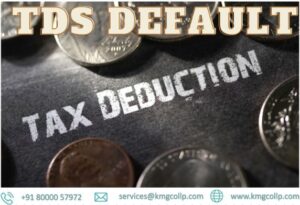
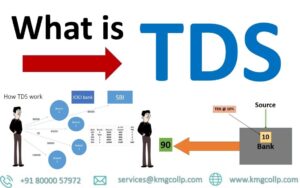
Table of Contents
Toggle
